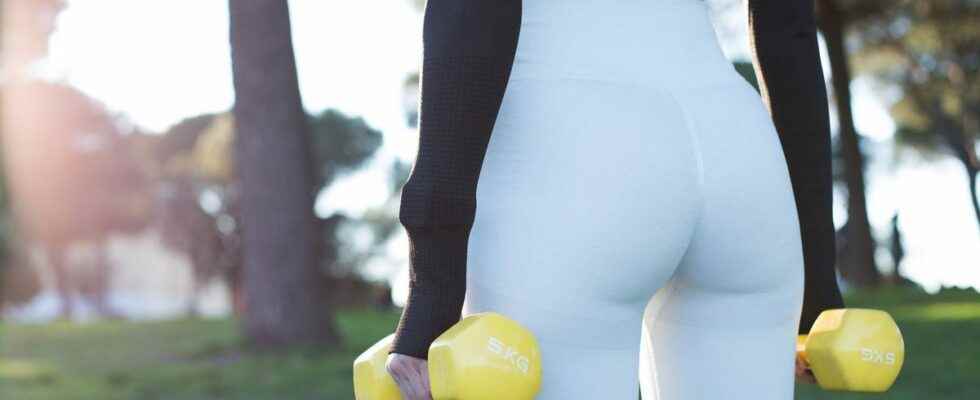Published on
Updated
Reading 3 mins.
Beyond the simply aesthetic aspect sought by some people, taking care of your gluteal muscles and engaging them on a daily basis is important to support the entire human body over time.
You don’t feel concerned by the fitness videos dedicated to abs and glutes shared on the networks? Or by looking for certain personalities to find the perfect shape? This is going a little too fast on a subject which, beyond aesthetic considerations, has a real interest: keeping well-muscled buttocks is important for our skeleton, our posture and quite simply our shape throughout life, as scientists explain in the pages of Futura Science.
Muscles dedicated to posture and walking
Hidden under the more or less dense bulge of each, the gluteal muscles or gluteal muscles are three in number: the small gluteal, the deepest, close to the hip joint. The gluteus medius covers the gluteus minimus and extends over the outer surface of the pelvis. The large gluteal meanwhile, covers the two previous ones and gives our posterior its shape, while playing on our movements, and our walk.
It is these three muscles which, under the impulse of our brain, generate enough energy to keep us upright, but also which allow us to walk or run by protecting our hips from the shearing movements of our joints.
Approached in such a way, we quickly understand that these muscles also play a role in the comfort of our body.
When the muscles decrease, the pain increases
Thus, if our gluteal muscles protect us on a daily basis during walking, the deficiency, on the contrary, can affect us and be the cause of various pains or ailments, especially as we age:
- Pain when carrying loads;
- Pain when people stand on one leg, or climb stairs;
- Painful syndromes of the greater trochanter (or gluteal tendinopathy);
- Osteoarthritis of the hip, an increasing pain, which sometimes requires the fitting of a hip prosthesis;
- Lower back pain;
- Patello-femoral pain (under the kneecap);
In addition, certain results suggest that the state of the muscles would also have a role in the good state of the perineum, another good reason to preserve your muscles.
Good in your body, good in your head!
Strengthen your buttocks, an essential that concerns us all
In the event of hip pain, or pain when walking or climbing stairs, strengthening your gluteal muscles could therefore solve part of the problem, regardless of the patient’s age. For Pierre-Marie Barry, sports coach in the Vaucluse, these are indeed the muscles involved in our daily well-being:
“The gluteal muscles are the muscles that allow us to remain sufficiently mobile in everyday life, to maintain posture, to acquire and, importantly, to maintain lifelong stability. Thus, when we get older, the muscles are more weakened. Just strengthening the glutes can make the movement more comfortable.”
Exercise brings rapid benefits for everyone, including the most athletic: “As soon as an older person strengthens their glutes, they become more mobile in everyday life“ confirms the coach.
But how do you maintain this crucial area of mobility on a daily basis? Pierre-Marie Barry mentions that the simple fact of sitting down and getting up from a chair several times every day while controlling the descent can allow beginners to engage their glutes and improve their stability. For those looking for a more pronounced effect, series of squats or a raised pelvis, lying on your back on the ground, with or without weight, obtain good effects quickly.
Without forgetting however that the maintenance of the form does not focus on a single zone, but on a more global approach, he adds.
“To acquire good stability, good posture and better form over time, you must not forget that the body is a whole, so if you build your buttocks, you must not forget to also build your back and your muscles. hamstrings”.
